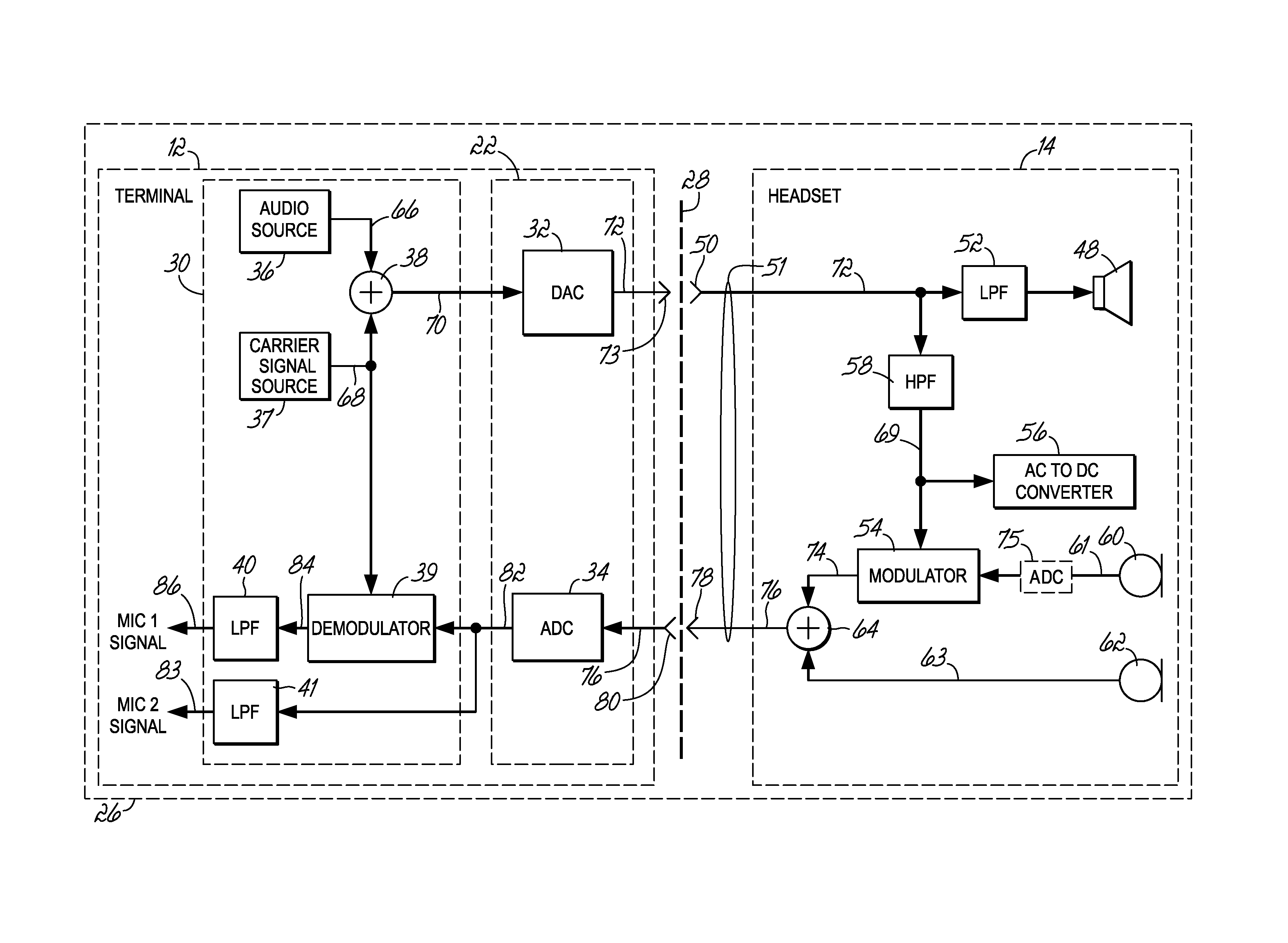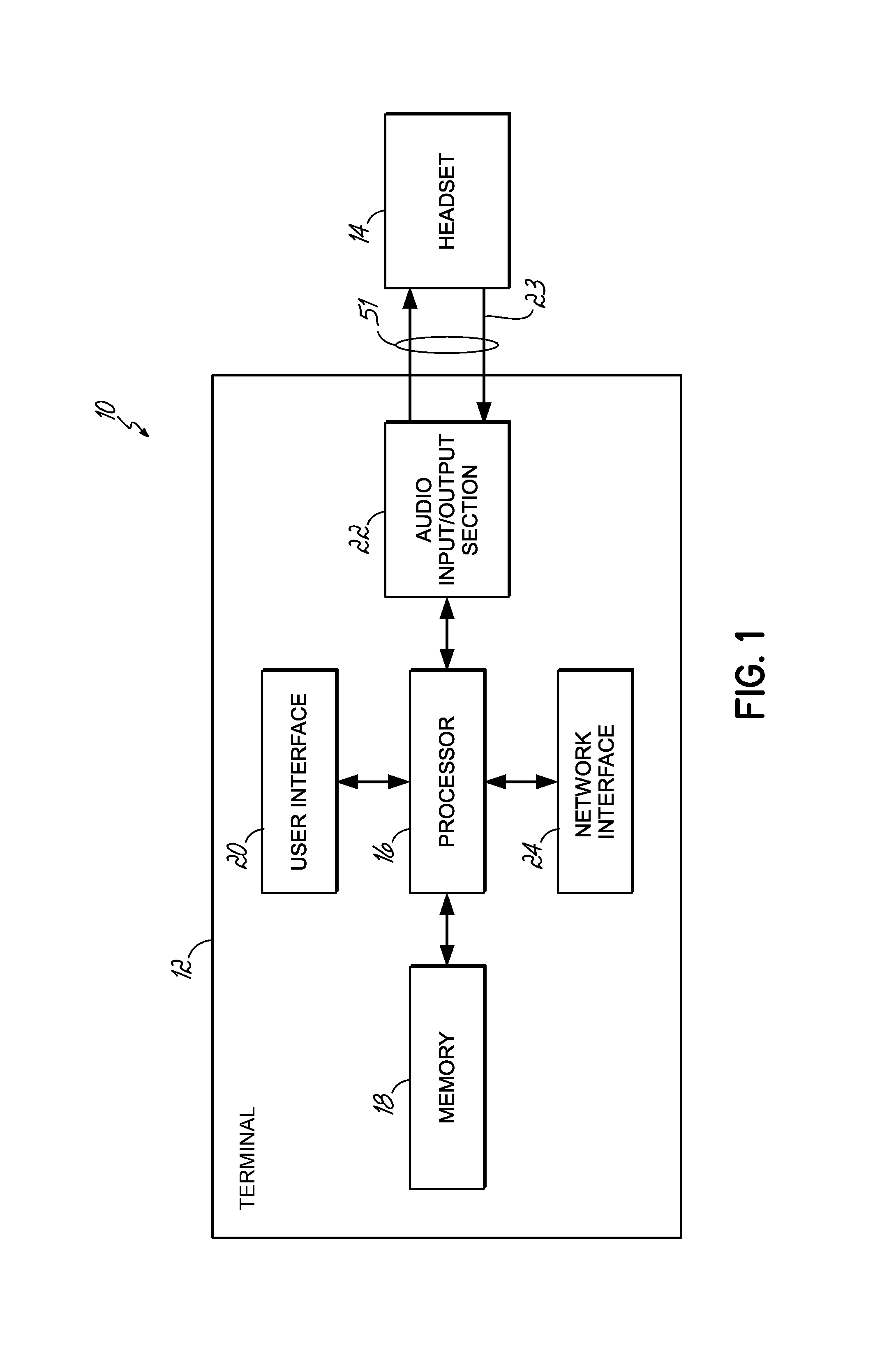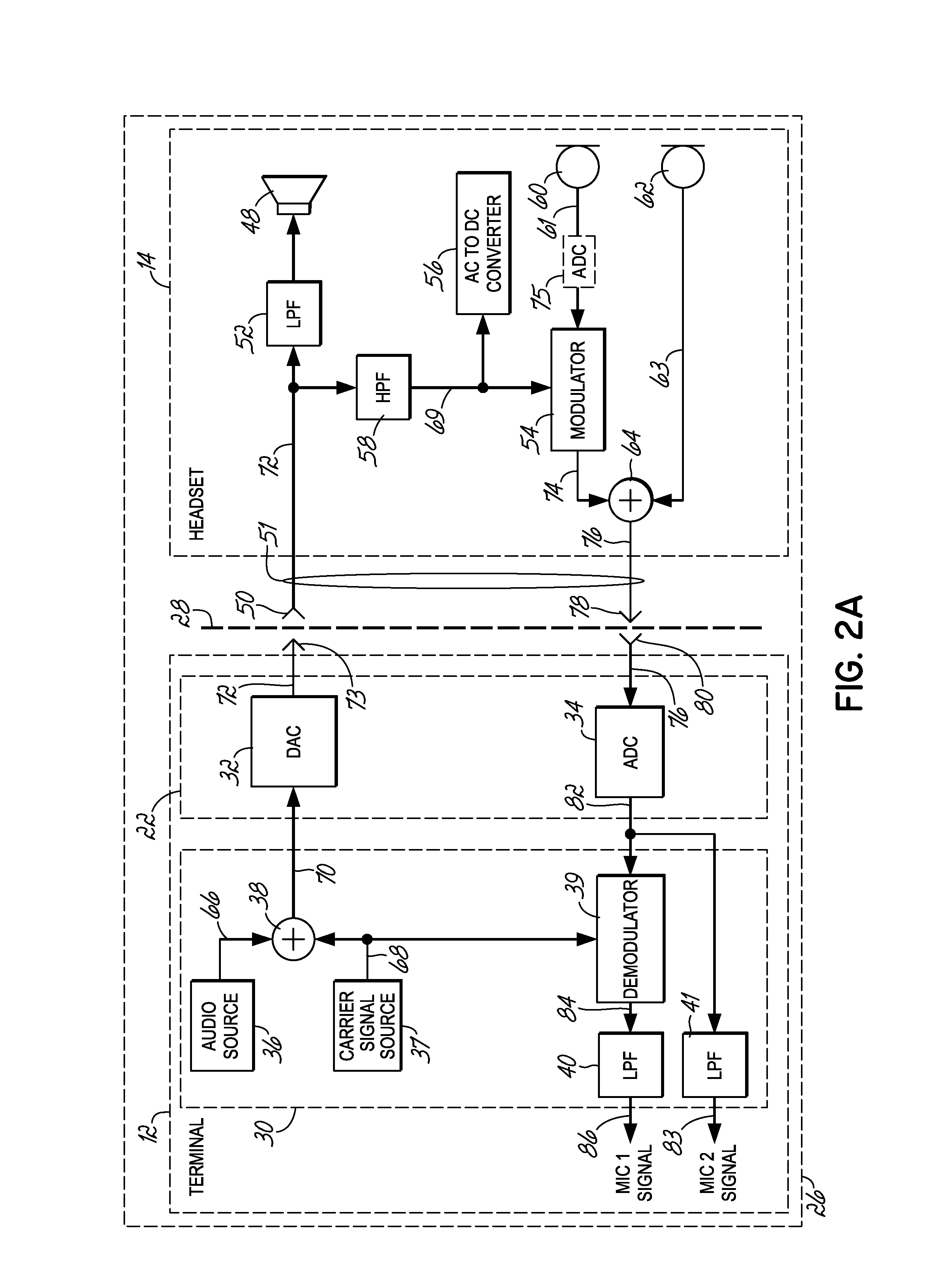Headset signal multiplexing system and method
a headset signal and multiplexing technology, applied in the field of systems and methods, can solve the problems of difficult speech recognition systems, difficult for other listeners to understand or understand, and the new headsets and terminals cannot be used with older legacy equipment to provide even the original level of functionality
- Summary
- Abstract
- Description
- Claims
- Application Information
AI Technical Summary
Problems solved by technology
Method used
Image
Examples
Embodiment Construction
[0018]A device uses frequency division multiplexing to combine a carrier signal with an audio signal, and outputs the resulting composite signal on a common physical channel connecting the device to a headset. In the headset, the carrier and audio signals are separated and the audio signal is provided to an acoustic actuator so that the headset wearer can hear the audio. The carrier signal may be used to provide power to the headset and / or to facilitate frequency division multiplexing of multiple microphone signals for transmission back to the device on a single physical downlink channel. In this way, multiple power and audio signals may share common conductors, allowing power to be delivered to the headset and multiple microphone signals to be transmitted to the device without modifications to existing device hardware, audio drivers, or connectors to gain the benefit of obtaining an additional microphone signal in the device, and without making legacy headsets obsolete. In one embo...
PUM
 Login to View More
Login to View More Abstract
Description
Claims
Application Information
 Login to View More
Login to View More - R&D
- Intellectual Property
- Life Sciences
- Materials
- Tech Scout
- Unparalleled Data Quality
- Higher Quality Content
- 60% Fewer Hallucinations
Browse by: Latest US Patents, China's latest patents, Technical Efficacy Thesaurus, Application Domain, Technology Topic, Popular Technical Reports.
© 2025 PatSnap. All rights reserved.Legal|Privacy policy|Modern Slavery Act Transparency Statement|Sitemap|About US| Contact US: help@patsnap.com



